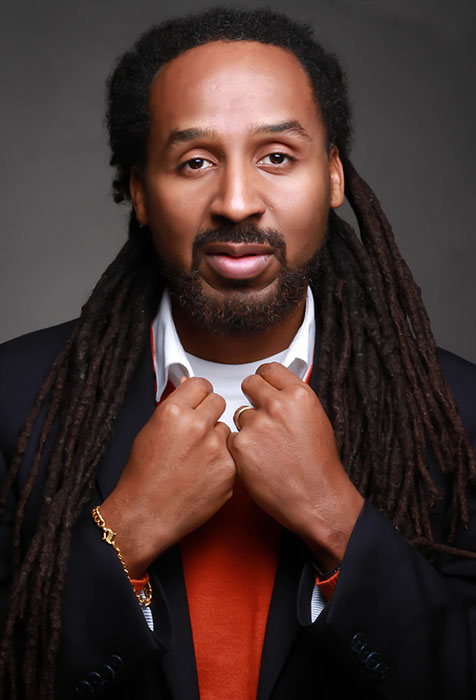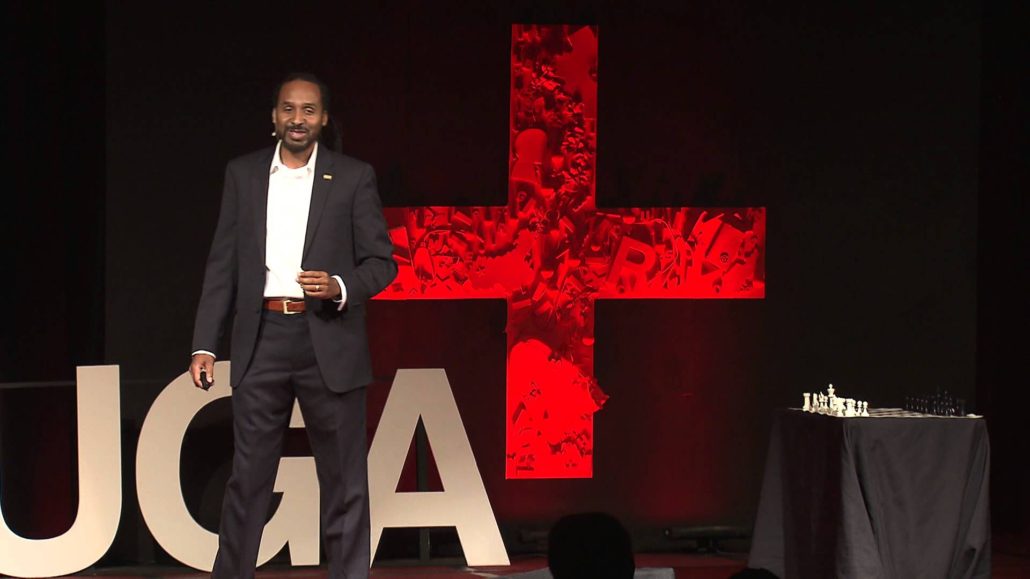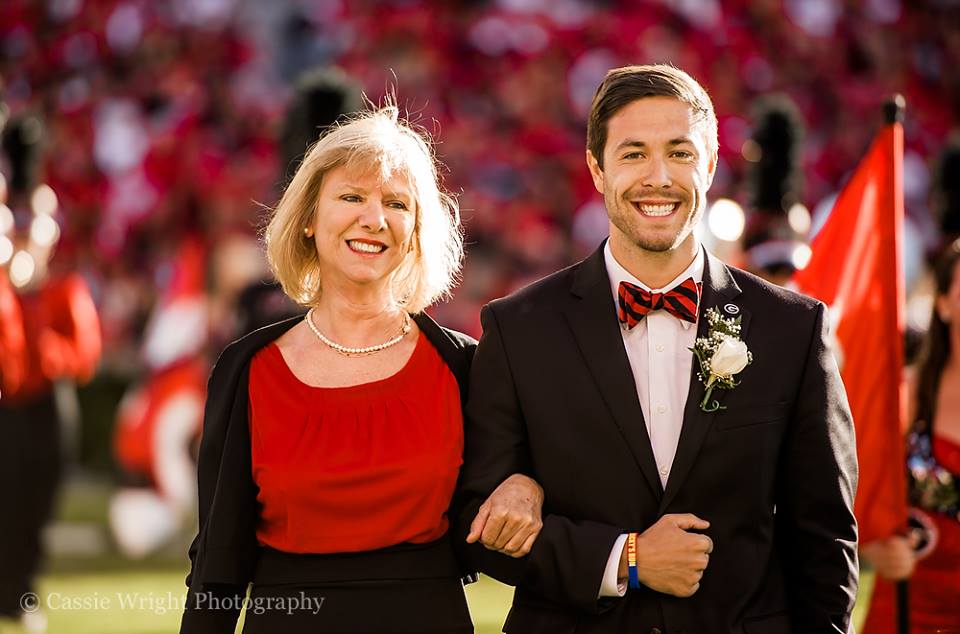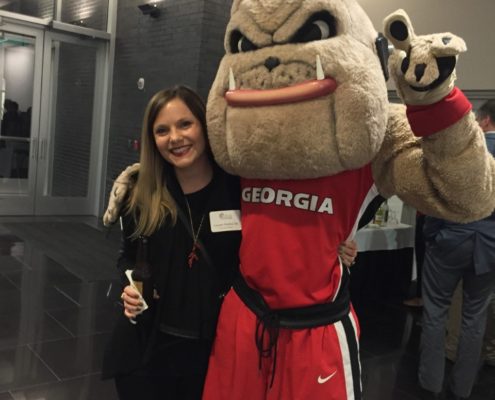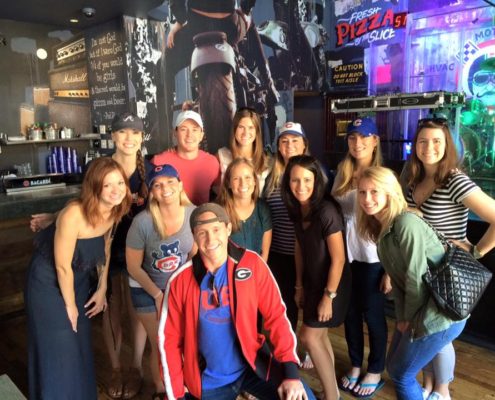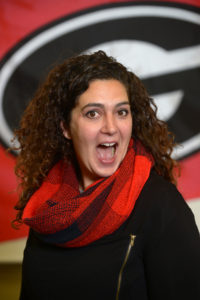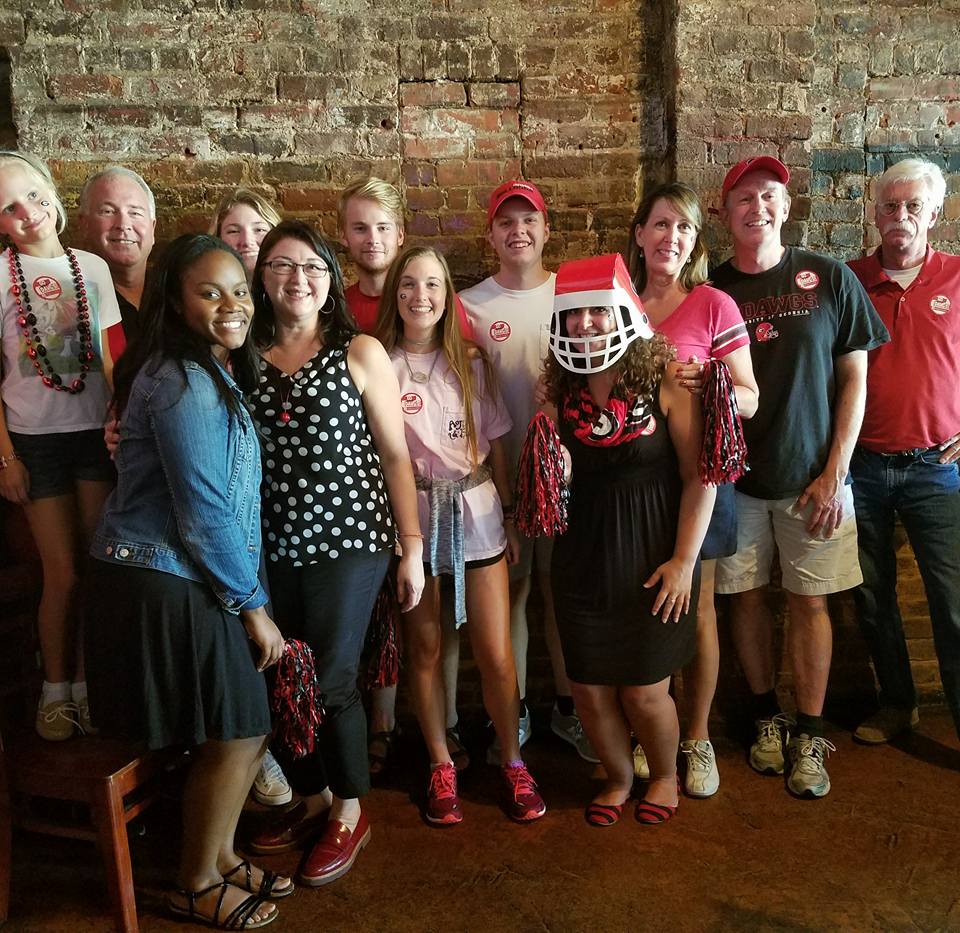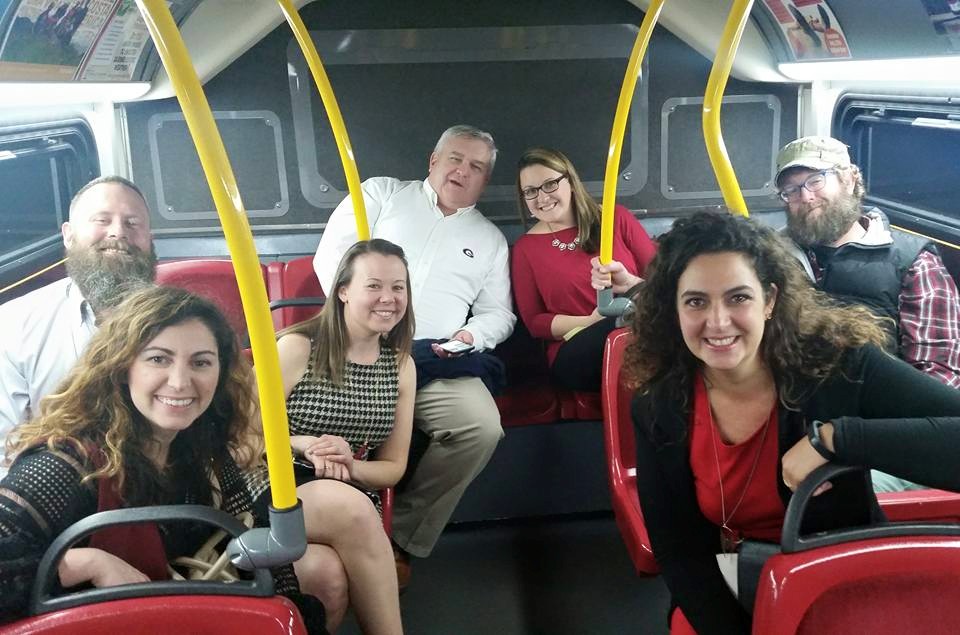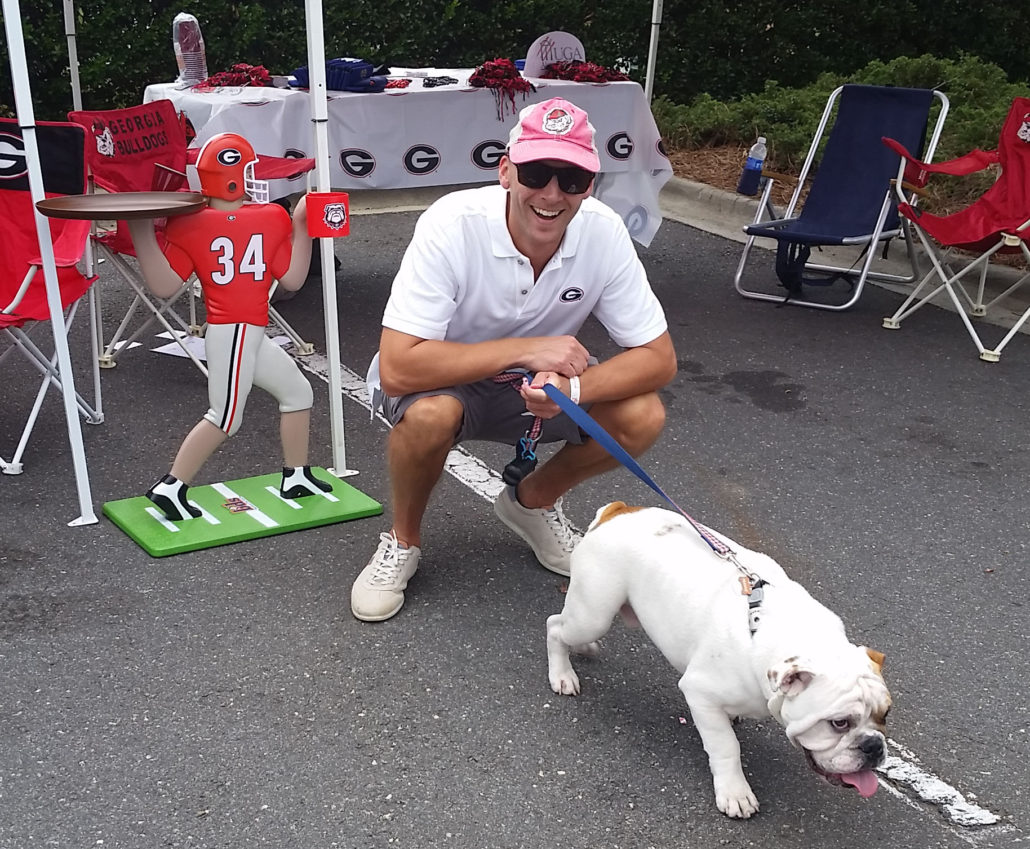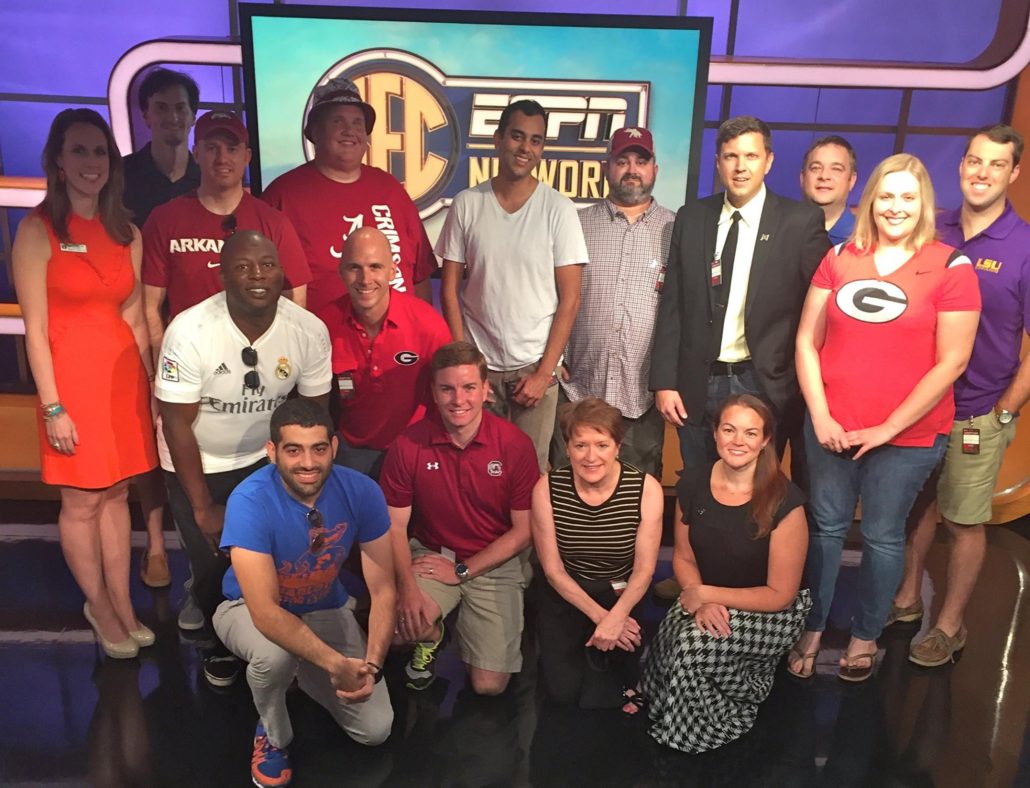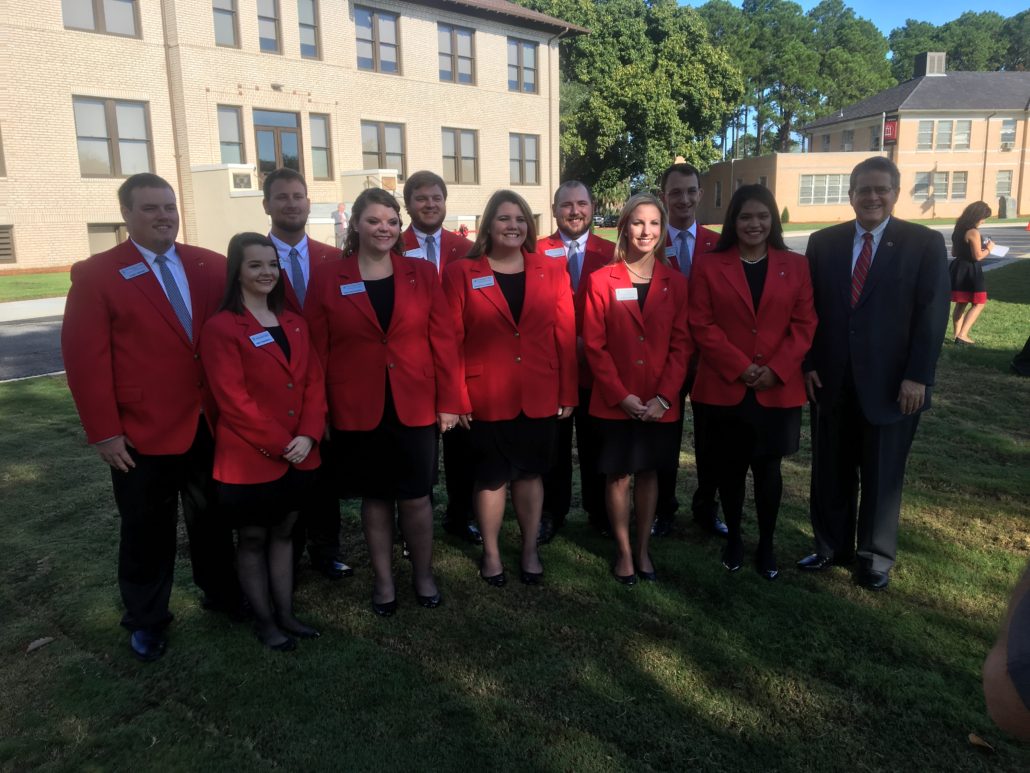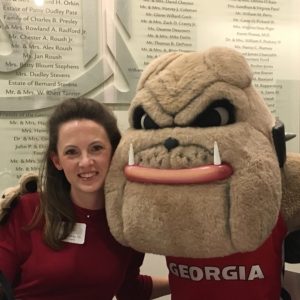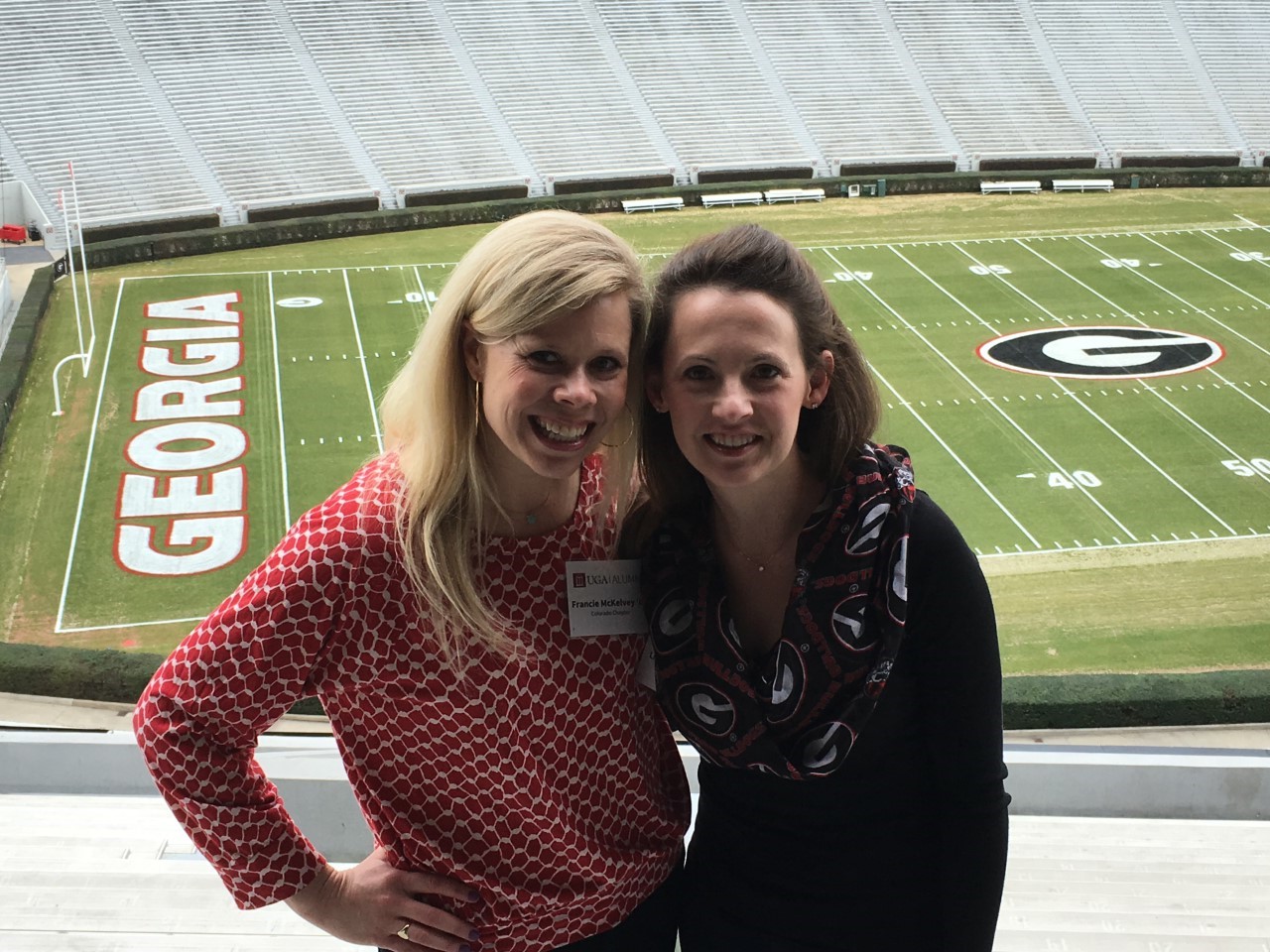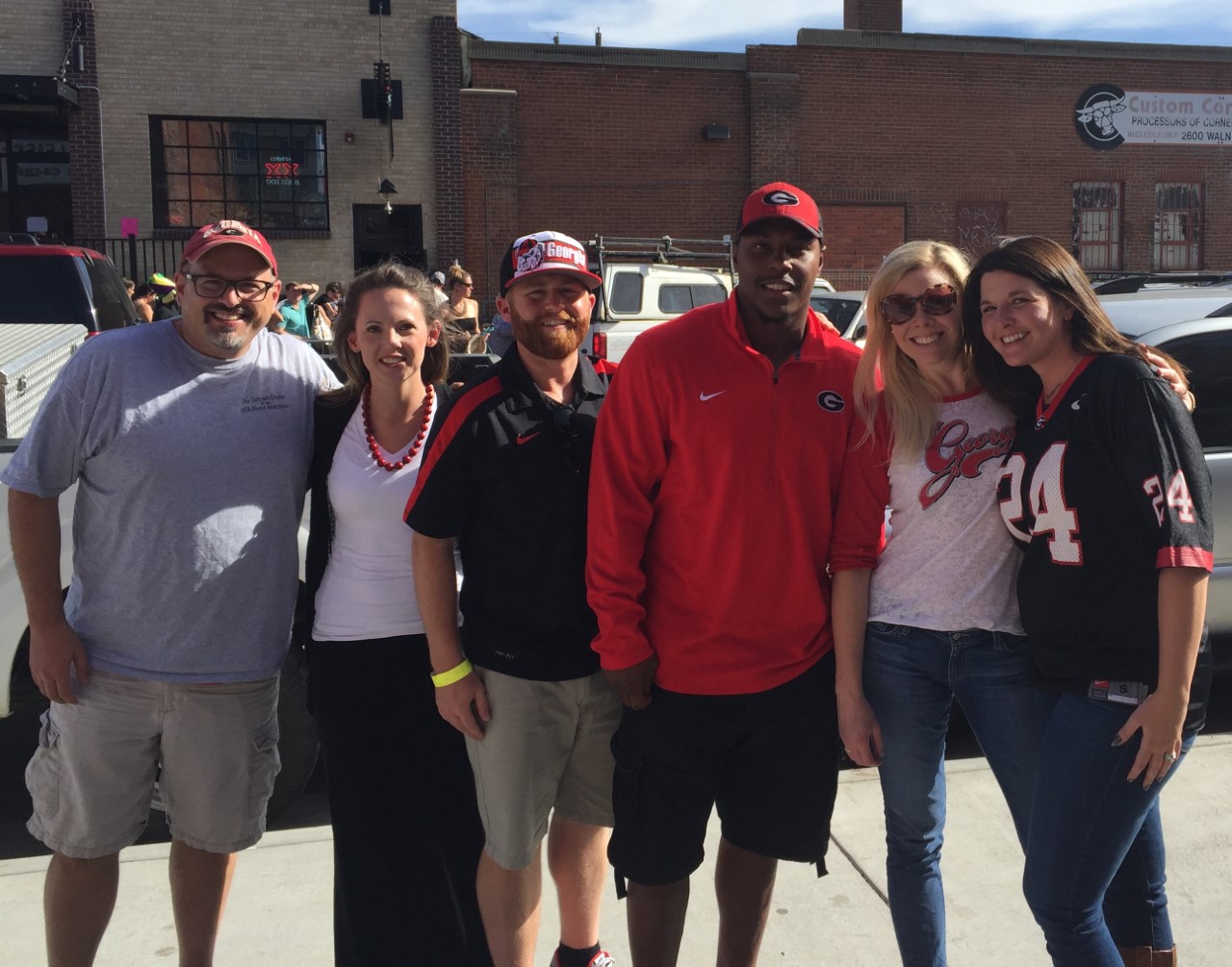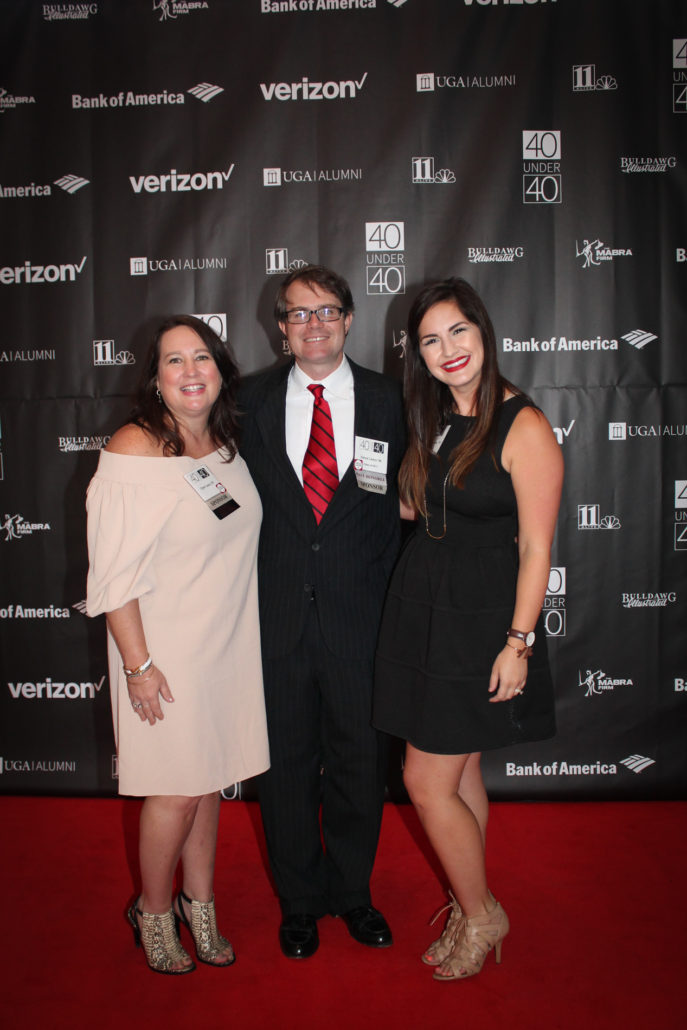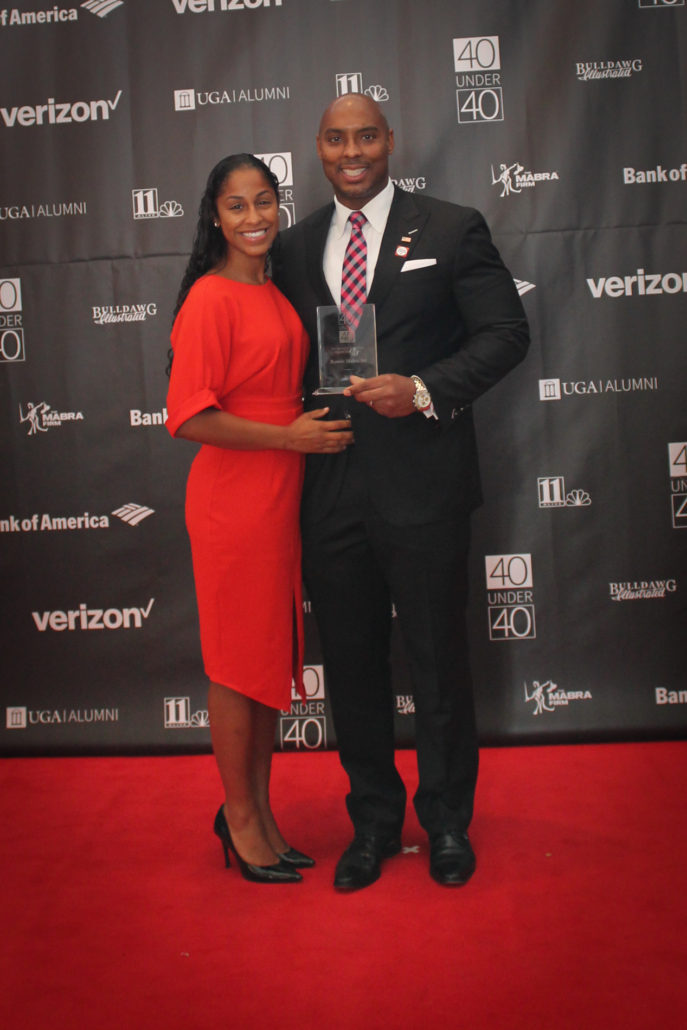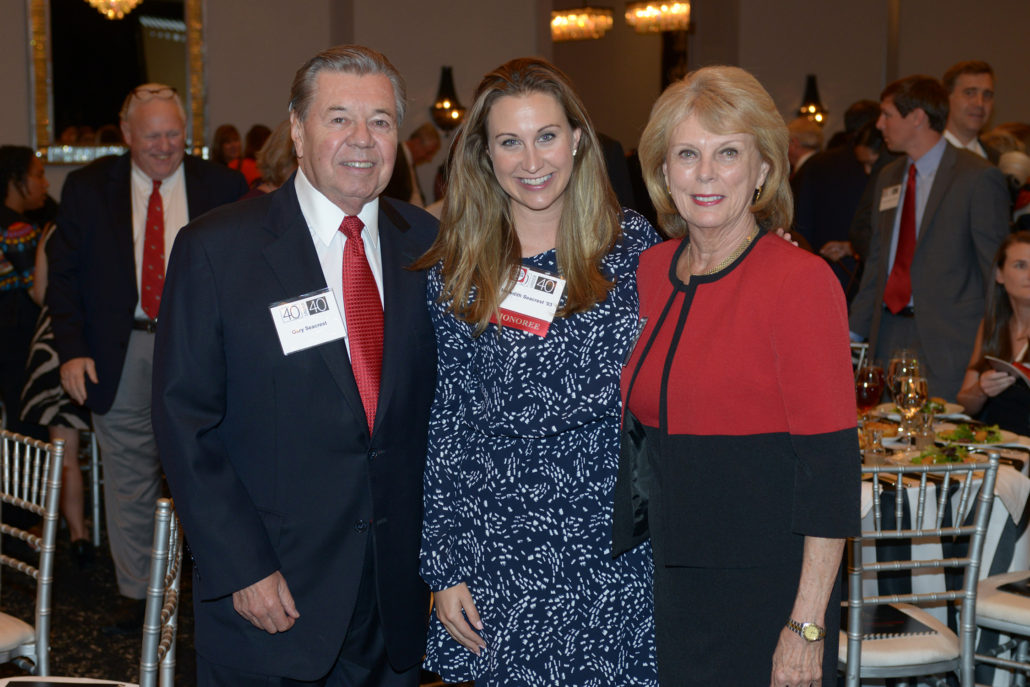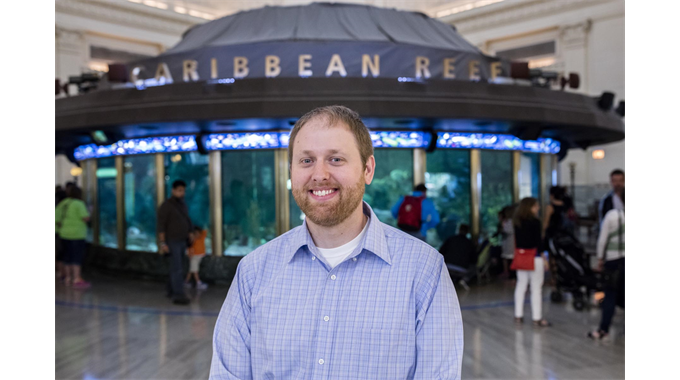Homecoming at the University of Georgia holds a special place in many graduates’ hearts. From the annual concert, to the parade through downtown Athens, or the carnival, there are plenty of memories to be made. This week, memories are cherished even sweeter for previous Homecoming Kings and Queens. I enjoyed the opportunity to catch up with some of UGA’s past Homecoming royalty last month to see where they are today and learn more about their experiences being crowned Between the Hedges.
1) When did you graduate from UGA? What are you doing now? When were you crowned as Homecoming King/Queen?
Mel Baxter (AB ’12): I was crowned Homecoming Queen in 2011, and graduated the following spring. After graduation, I enrolled at Clemson University for graduate school and then moved to San Francisco to work at the Stanford Visitor Center. A year ago, I accepted my dream job as the Visitor Center Director at The University of Texas at Austin. Though I left Athens soon after graduation, and have worked at a variety of schools, I still bleed red and black and am a proud UGA alumna.
Colton Fowlkes (BS ’16): I left UGA in May 2015, and I graduated with degrees in biology and psychology, a minor in religion, and a certificate in personal and organizational leadership. I was crowned during my senior year in October 2014. I am in my first year of dental school at The Dental College of Georgia at Augusta University.
Johnelle Simpson (AB ’16, BBA ’16): I graduated from UGA in May 2016. I am now employed by the Clarke County School District in Athens, where I serve as the district’s coordinator for Great Promise Partnership and Work Based Learning. I was crowned King in Fall 2015.
Christina Swoope (BS ’11): I graduated from the Franklin College of Arts and Sciences in 2011 with a bachelor’s degree in microbiology and was honored to be UGA’s 2009 Homecoming Queen. I work at the White House Office of Management and Budget as a program examiner. In this role, I have the opportunity to serve America’s most vulnerable population through my work on the Medicare program.
Collette Toney (BSED ’13, AB ’13, MED ’15): I graduated from UGA with undergraduate degrees in both social studies education and history in May 2013. I then graduated from UGA with my master’s degree in May 2015. I was crowned UGA Homecoming Queen in Fall 2012. I am now an educator and cheerleading coach.
Darryl Tricksey (BSEH ’10): I graduated from UGA in 2010. Now, I am a senior associate consultant at PricewaterhouseCoopers in their People and Organizations practice. I was crowned in 2009.
Amanda Turner (’17): I finished my coursework at Georgia this past May, and am completing an internship in Augusta before receiving my diploma in May 2017 in human development and family sciences. I am the most recently crowned Homecoming Queen, having received this honor in fall 2015. I am interning with the Children’s Hospital of Georgia for the Child and Adolescent Life Department to be a child life specialist. Child life specialists are development experts, trained to help children process and cope during stressful experiences and specifically within the hospital environment. We help the child or teenager understand their medical diagnoses and corresponding procedures through medical play, procedural support, coping and distraction, family support and normalizing their environment.
2) What made you want to run for Homecoming Court?
Simpson: I was nominated by the Student Government Association to be its representative for Homecoming King.
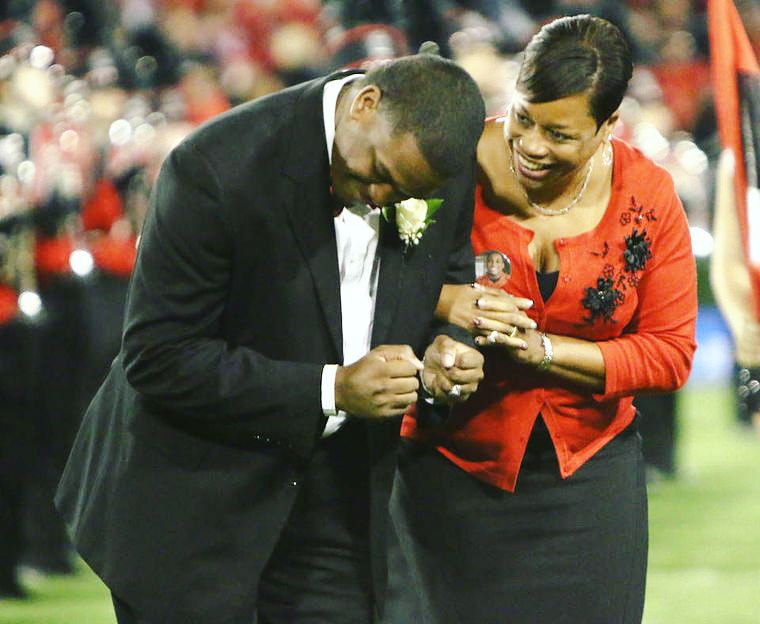
Johnelle Simpson (AB ’16)
Toney: I had a lot of friends who encouraged me to run for Homecoming Court. My sorority sisters nominated me to represent our sorority, Alpha Kappa Alpha Sorority, Inc. Personally, I thought it would be so wonderful to serve as a representative for UGA on Homecoming Court. UGA was the place where I found the most inspiring and faithful friendships, organizations that molded me into the person I am, staff members who believed in me, and academics that gave me the desire to strive for excellence. I couldn’t imagine NOT wanting to represent the place that has so much of my heart in it!
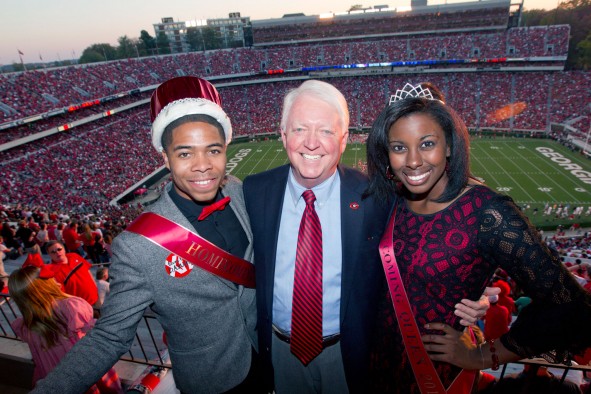
Darien LaBeach (BBA ’13) & Collette Toney (BSED ’13) pose with former UGA President Michael F. Adams.
3) Describe your crowning experience.
Fowlkes: It was pretty surreal walking my mom out Between the Hedges at the homecoming game. I’ll never forget looking up toward the front of Section 309 and looking straight ahead toward the hedges and seeing all of my friends cheering for me. My favorite part of my crowning experience, though, was being able to look my mom in the eyes and simply thank her for giving me the opportunity to attend the University of Georgia.
Swoope: I am so thankful that someone videotaped the halftime crowning in 2009 because I was so excited and surprised that I honestly can’t remember it fully. To say it was an overwhelming moment would be an understatement as, for me, some of the most amazing moments in my life have all taken place on the 50-yard line of Sanford Stadium and never in my wildest dreams would have I have imagined that this would be one of them. Exactly five years prior, I had been invited to conduct the Redcoats at homecoming as a high school junior, and I specifically remember thinking that conducting the Redcoats that day would be a once-in-a-life-time opportunity. Three years later, I marched onto the field for my first pre-game show as a Redcoat Band Drum Major, being the first African-American female in the history of this university to do so. In that moment in 2009, I stood on the field in total disbelief as a member of the 2009 Homecoming Court representing an organization that I can honestly say has had a large hand in making me who I am today. Very rarely can you say that something has truly changed your life, but I know that I am the person I am today and the leader I will be tomorrow because of the amazing experiences, relationships, and challenges I faced at the University of Georgia. Crowning in 2009 is the moment at which all of that became apparent to me.

Christina Swoope (BS ’11)
Turner: Wow, there are almost no words to tell you how overwhelmed and loved I felt. It is such a powerful experience to stand before a student body of 35,000 students, look into the crowd, and know that most of the incredible faces staring back at you are your friends. Not just people you pass on the bus or in the street, but real friends with whom you have had real experiences. It was such an overwhelming moment to experience all the love you’ve poured into others’ lives and experiences, reverse and pour right back onto you. It’s one of those beautiful, Heaven meets Earth, humbling moments that I think only come a few times during your lifetime. To have one of those moments, surrounded by my family and friends, on Stanford Stadium is something I will never forget. Through the entire experience, I wanted to illuminate the stories and peers that had changed me, not just what I had done during my time at Georgia. I would not be the Georgia Bulldog I am without the influence of others. I hope that in that moment of crowning, that my fellow Bulldogs in the stands felt that their stories were being celebrated right alongside mine.
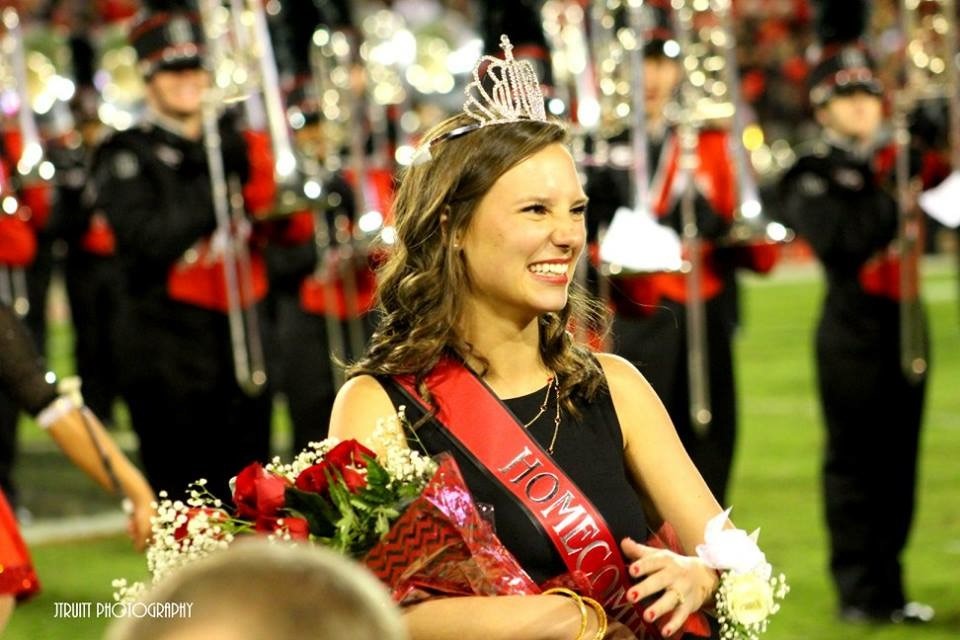
Amanda Turner ’17
4) What did it mean to you to be elected Homecoming King or Queen?
Baxter: Being voted Homecoming Queen meant the world to me. I came from Kansas to be a Georgia Bulldog, and being a student changed my life in a number of ways. It was an incredible honor to represent the place that I love so much, and I will always be grateful for the opportunities that UGA has given me.
Tricksey: It meant that I was able to represent the entire class of 2010 and all that we had accomplished. To this day, I am amazed at the impact that we had on the university, and I am proud not just to be a Georgia Bulldog, but to also have graduated with such a dynamic group of people.
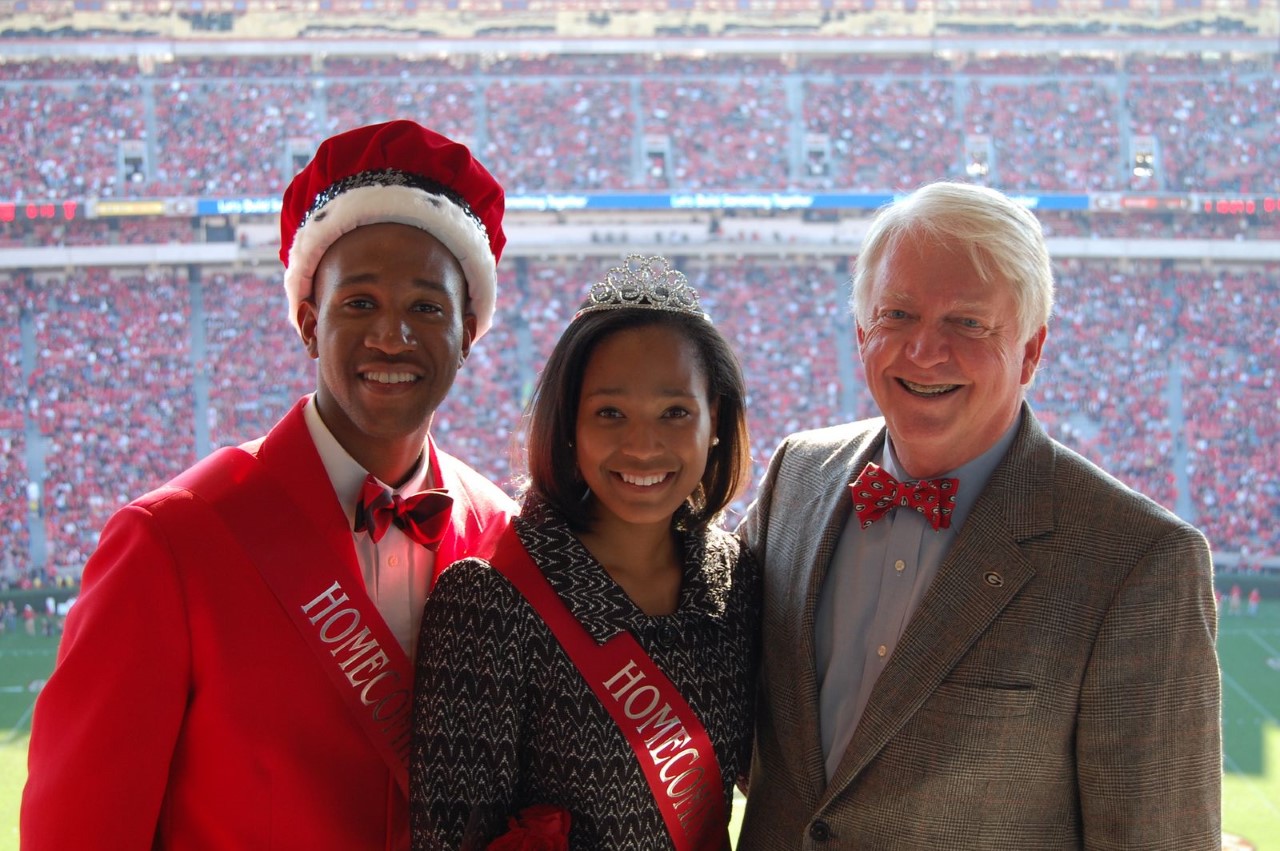
Darryl Tricksey (BS ’10) & Christina Swoope (BS ’11) pose with former UGA President Michael F. Adams.
This year’s King and Queen will be crowned during halftime of the Vanderbilt football game on Saturday, October 15. To learn more about Homecoming 2016 and to view a schedule of Homecoming events for students and alumni, please visit www.ugahomecoming.com.

